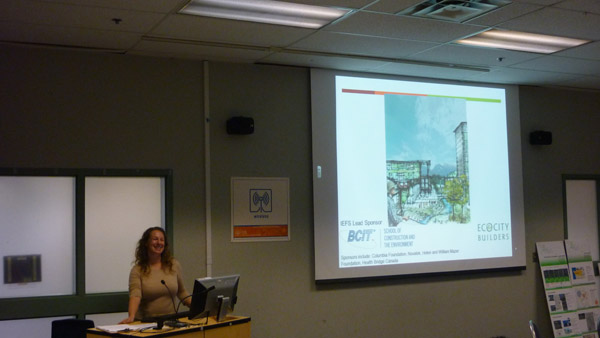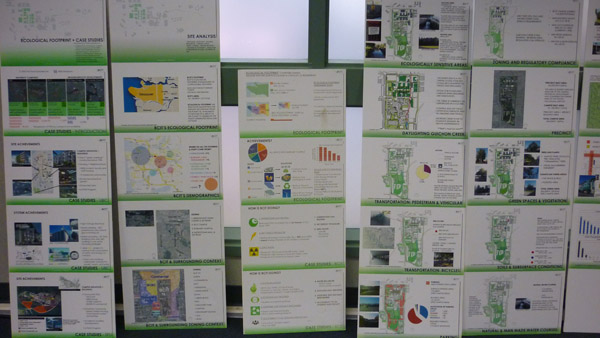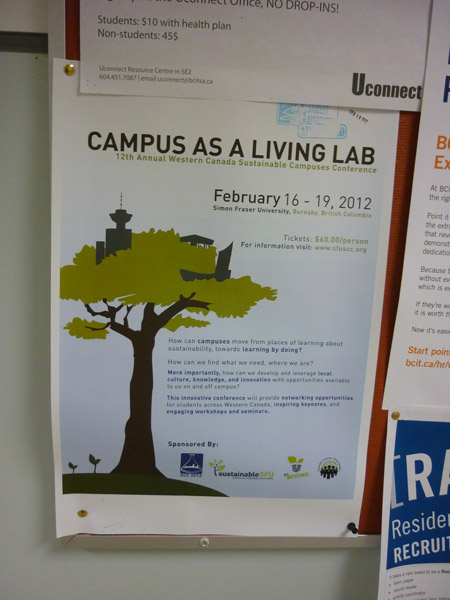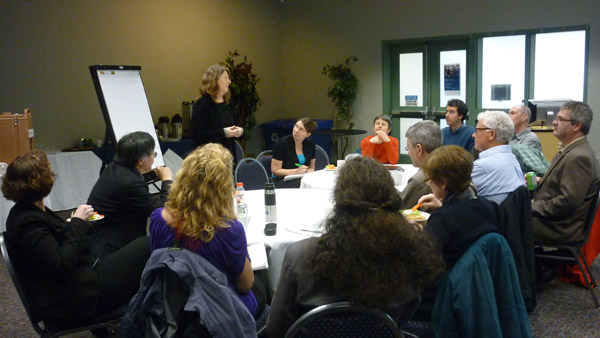by Sven Eberlein
The following is an excerpt from a series of workshops discussing the IEFS with a range of stakeholders and expert advisers in Vancouver, Canada, from February 9-14.
The original series was published on Daily Kos and can be found in its full length at the following links:
Carless in Vancouver, Part 1: Boots on the Ground
Carless in Vancouver, Part 2: Going for the high-hanging fruit
Carless in Vancouver, Part 3: Follow the Flow
Friday, February 10th
The second IEFS-related workshop took place at the BCIT’s School of Construction and the Environment‘s Burnaby campus in the Eastern part of Vancouver. The theme of the session is to make the BCIT campus into an Ecocity School, a model that could be followed by others.
After a “Lunch and Learn” with Ecocity Builders’ Richard Register and Kirstin Miller, Jennie Moore, Director of Sustainable Development and Environmental Stewardship at BCIT and IEFS Core Adviser, reports on the progress made since a campus ecocity design charrette was done a couple of years ago.

And they have been really busy! Jennie describes how the institute adopted a series of sustainability goals and how they went to work on the recommendations.

One of the things they did was hire two energy managers, Alexandre Hebert and Andrea Linsky. Alex gives us a rundown of the energy-saving projects they have taken on around BCIT’s campuses since he started in 2009. He describes how BCIT uses 44,000 gigajoules (GJ) of energy every year, and how they’ve already saved more than 9.5% of all electricity used annually, the equivalent of powering 440 houses for a year, just by installing auto-timers, high efficiency boilers, compressed air systems, efficient lights, and adopting “lights out” procedures.


They are now well on their way to reducing energy demand in the 7 main buildings by 75%. But this is just the beginning. Their commitment to sustainability encompasses not only green building design on campus, but employee stewardship programs, a greening curriculum & instructional practice, and community building programs in alignment with the goals of reducing their overall ecological footprint.
Speaking of alignment, much of what they have been doing is very much in line with the IEFS, and so the next part of the session is a deliberation by the various department heads on whether to become an official Ecocity School, spanning all branches of the Institute, from the School of Engineering to Health Sciences to Media and Creative Communications. Kirstin and Richard were facilitating the discussions.


It is really quite inspiring to see how far these determined folks have already come and how much farther they are planning to go in completely transforming 5 campuses with a population of over 15,000 full time staff and students, plus an additional 32,000 part-time students, into a zero waste, ecologically restored, greenhouse gas-neutral net energy producer. As Kirstin says, “they really walk the talk and we love them.”
